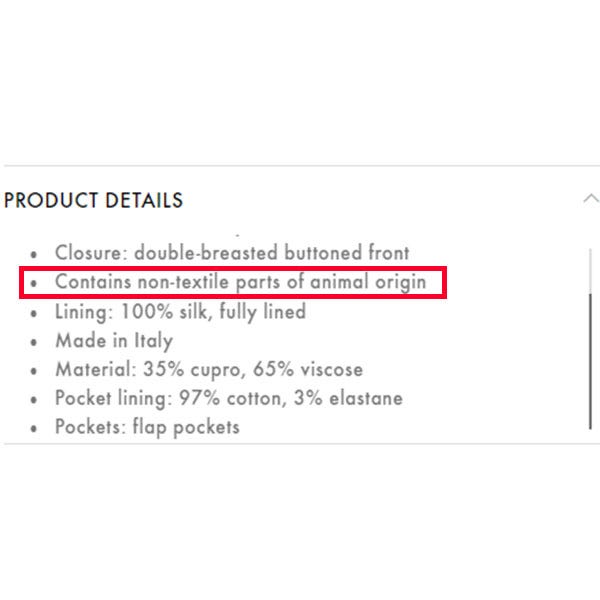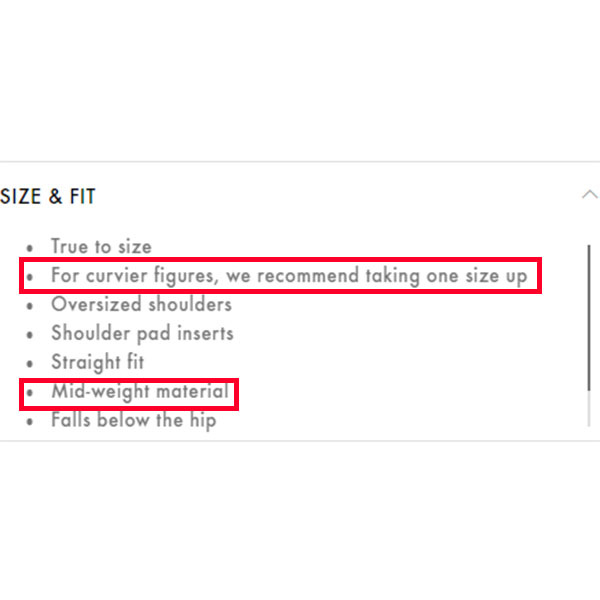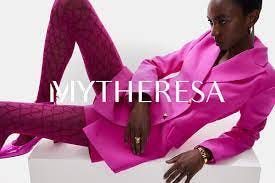Why I am An Underrated Fashion Professional Pt.1
And a sneak peek into localisation or a story about my first life as a multilingual professional in the fashion industry
If you read my ‘About’ page, you probably already know that I am a freelance sub-editor and translator for luxury fashion e-commerce and that I call myself an ‘underrated fashion professional.’ But don’t you worry! I don’t define myself that way because I feel lesser than about my job; on the contrary. Rightly, because I am proud of what people in my field achieve daily in the fashion industry, I want our work to be more recognised and valued. I will talk about my job and experience, but I am part of a more extensive process called localisation*. So, without further ado, let me bring you into my world!
CEO, Designer, Head of Marketing, Editor-in-Chief, Stylist, Buyer, Fashion Editor, Photographer, Art Director, PR etc. These are the roles fashion media enjoy discussing because they either have to do with power, glamour, or both. My work, instead, doesn’t involve any of those two things. For the fashion industry, people working in localisation are often the least of its worries, yet we are needed. But before diving into the nitty-gritty of my job, I want to share the below definition of localisation by the marketing company Tech Target, one of the most concise and comprehensive I have found.
*Localization is the adaptation of a product or service to meet the needs of a particular language, culture or desired population's "look-and-feel.
A successfully localized service or product is one that appears to have been developed within the local culture. Examples of localization include changing z's to s's for British English. In addition to idiomatic language translation, such details as time zones, money, national holidays, local color sensitivities, product or service name translation, gender roles and geographic references must all be considered. Language translation, which is a large part of localization, can sometimes be facilitated with automatic language translation. However, additional work is usually needed to fine tune text for syntax and idiom.
Ideally, a product or service is developed so that localization is relatively easy to achieve. The anticipation of localization requirements is sometimes referred to as an Internationalization effort. The process of first enabling a product to be localized and then localizing it for different national audiences is sometimes known as product globalization.
You see, localisation is many things, therefore complex. And translation and sub-editing are part of it. So, my work for luxury e-commerce is, as a consequence, much more than checking grammar and syntax.
When I started working in the industry ten years ago, they didn't call what I do localisation. My job was under the umbrella of the editorial department. I was a Product Writer for the French market for Mytheresa, the most prominent German fashion luxury e-retailer. My team included three product writers, a fashion copy editor and a sub-editor. As product writers, our job consisted of describing the items (clothing, shoes, bags, and accessories) that went online every week; the copy editor worked on the homepage and email copy, brand biographies, and PR communications; the sub-editor reviewed the work of the product writers and copy editor. Nothing has changed when I think about the team's structure, but it is wild to me now to think we didn't translate from the English copy. Instead, each team wrote their product descriptions in English, Italian, French, Arabic, and German. It is unimaginable today because of the volume of collections (meaning more items to describe) and the speed everything needs to go. If now the customer expects to find newness daily, ten years ago, they expected weekly new arrivals.
An example of a Mytheresa product description


I haven’t visited Mytheresa site in a while, but it seems some things have changed since I worked there. It looks like they harmonised the descriptions, so they are all the same in each language, so they complied with what their competitors do probably because of volumes, but above all, because it avoids having discrepancies from one language to another. One could think it’s a pity as descriptions don’t reflect a market’s editorial and culture anymore, but focusing on other aspects of localisation will be done through marketing, specific campaigns and events.
I chose the above Saint Laurent double-breasted velvet blazer because:
Saint Laurent is a brand that French customers have a deep attachment to because it is one of the jewels of Parisian fashion. Hence, the brand was always part of the top French sales when I was working at Mytheresa.
The blazer is a Saint Laurent classic as it refers to ‘Le Smoking’ initially created by Yves Saint Laurent in the 60s.
The blazer might be 2690 €, yet it is low in stock in almost all sizes, proving it is a best-seller, hence a product French and other customers enjoy.
Now, about the product description, as you can see, the first part is about putting historical and sartorial context to explain the blazer’s value. Reading it, the customer will understand it is a classic with a long history. Recalling ‘Le Smoking’ brings an element of nostalgia and reminds the customer it is an item they can keep for years - in other words, that’s an investment piece. The second part is all about what is visible to the eye in the pictures. The product details, on the other hand, are about everything invisible to the eye. I highlighted the second bullet point because, ten years ago, knowing an item mainly made of fabric had some parts of animal origin was unheard of and maybe not of much interest to the customer. But now, people are more conscious about what they’re buying; they want to know more about products.
As for the size&fit bullet points, if you’ve ever wondered what ‘true to size’ meant - many customers did when online retailers started - it refers to the fact that if you buy this blazer in a size US 10/UK 14/FR 42/IT 46, it sizes accurately according to the industry standards. The second bullet point wasn’t there when I started, but now it is interesting to see how such a size&fit point matters as more and more brands from outside Europe didn’t have the same sizing standards, such as South Korea, which is/was known for its tiny sizes. The sixth bullet got my attention as it is another detail that didn’t exist when I was a product writer. I believe it is an important one because some clothing's weight will surprise you once they arrive home, so knowing in advance an item's weight can help make a buying decision without having to return it.
Each team established a style guide representative of each market we wrote for and aligned with Mytheresa’s standards. I remember one meeting during which my then-manager had every team translate into English descriptions of the same product to see how culturally different each market was. German descriptions were more straight-to-the-point, focusing on the technicalities of the clothing; French ones were all about the historical facts and details the pictures didn’t show; Italian ones mastered the art of styling proposals and used very precise fashion vocabulary; English ones loved to play on the imagination of the customer. We did all this without having much data apart from brand reports explaining what sold the best in each market.
We relied on Vogue Collections' seasonal editions to write our descriptions for the French team. We read extensively French fashion magazines such as Vogue, Elle, Marie Claire, Numéro, and Citizen K; even though the language and tone might not be what we would use for Mytheresa, it was nevertheless necessary to read them to stay on top of trends but above all on top of the fashion language evolution in France. After all, living abroad does affect you linguistically. Some expressions don’t come to you as naturally as before. You start sliding a word of English, German or Italian here and there simply because what you want to express isn’t encapsulated in one word in French, or the word existing in French doesn’t fully express what you want to say. This happens a lot with fashion vocabulary, too. For that reason, perusing English-speaking fashion publications was a necessity because they were the ones that adapted faster to the changes the Internet brought to fashion. Meanwhile, street style blogs helped to gauge how trends came and went and, therefore, write styling tips accordingly, meaning they needed to be a well-balanced marriage between timelessness and trendiness.
I realise now what a luxury it was to have clothing and accessories on-site. Today, I am working mainly with photos, and I can tell you images don’t cut it. Mytheresa was an excellent school to learn about fabrics, materials, techniques, size and fit, etc. It’s an experience that helped me acquire invaluable knowledge. It’s one thing to gather information about Loro Piana's one-of-a-kind cashmere creation process, and it is another one to touch and feel that specific soft wool in your hands. The tactility allows for a broader and more precise vocabulary to describe products and, therefore, convey to the customer what they are missing physically. Occasionally, we ‘catwalked’ the office, holding a bag, wearing a jacket or a coat, indulging in our love for craftsmanship and well-made items. But it wasn’t only about feeling ourselves. We were actually working. Our moments of vanity let us notice if an item was too heavy, bulky, comfortable, etc.
I insist on the accessibility to physical collections because when I began my career, I was self-taught. I didn’t go to a fashion school, but I did extensive research to write a culture and fashion blog during my spare time while in uni. Even though my dad and mom owned some luxury items, it didn’t mean I felt and understood what luxury fashion was. It took me working at Mytheresa as a Product Writer to feel like I broke into the wings of the fashion industry. Personal research and curiosity are a good start for this job, but what helps tremendously are brand trainings and buyer meetings. Christoph and Susanne Botschen, Mytheresa’s founders, built unique relationships with brands when they launched their Munich-based brick-and-mortar luxury boutique Theresa in 1987. After all, they were the first to bring Prada into their multi-brand store. I am mentioning this small detail because it is such relationships they built over almost 30 years with big fashion players that later benefitted Mytheresa when they launched it in 2006.
For people working in my field, these relationships are fundamental to getting more insights and information about brands’ history and their products. When a brand comes to present a new collection, they send their representatives or the designers themselves come with luggage full of samples. That’s how I listened to Edgardo Osorio, Aquazzura’s founder, tell how, as a Colombian, dancing was part of his culture. Rightly for that reason, when he noticed his female friends didn’t keep their heels on during parties, he thought about creating beautiful heels women could wear from day to night. If you visit Aquazzura About page, you will read, ‘Exquisitely handmade in Italy with a particular focus on comfort and wearability, Edgardo Osorio's creations combine luxury and craftsmanship with an innovative design and vibrant colour palettes.’ See, the site gives you facts; meanwhile, the brand training gives you context for storytelling.
Other meetings I loved attending were the buyers’. It was the occasion to learn about the ‘buy’ of the season, what sold well and what didn’t in each market. They helped to understand better what were the constants and variants of each market and, therefore, where to focus our attention when writing our product descriptions. Saint Laurent was a constant for the French market, especially in the bag category, so we paid extra attention to the details, such as the dimensions. Customers often returned them because they thought a model was medium when it was small or because the shoulder strap was too long. Details such as the number of pockets and card slots,and the type of clasp could determine if a bag became part of the return rates. The variants include trends, a brand being acquired by a conglomerate, and a designer’s new appointment, in brief, all things affecting the customer’s perception of a brand. Fashion being so fast-paced, in our copy, we tried to stay as neutral as possible to avoid making too many amends later on if there were significant changes. You wouldn’t want to spend much time reviewing thousands of product descriptions to erase references to a designer.
Customers are what make brands and retailers. That is why we needed to know the French luxury customer and Mytheresa's. When an online retailer decides to localise, they expect a market to grow. It usually happens that e-retailers notice a market buys from them a lot despite the site needing translation, taxes, customs, shipping costs, size&fit and price adjustments.
All in all, the trigger to localise is making more money. One may wonder why betting on a challenging market like France is necessary. Localising for luxury retailers means you will often hear a site needs to be translated into French because Paris is one of the fashion capitals despite a complex clientele that buys much less than American, Chinese or Korean customers. Here, the cultural factor takes over the financial one. France is known for its long fashion History and is a destination for tourism and luxury shopping. Therefore, it is a challenging market to seduce but also a coveted one for foreigners as the country's cultural value worldwide is undeniable. I've always found that our fashion heritage made us complacent and, consequently, reluctant to really see what French fashion has to offer and what exists beyond Paris. So, to be honest, I find the French customer quite dull.
I probably feel that way because having a double culture and living in different countries makes me feel French fashion is among the least open-minded and diverse in the Occident. One example in my work is the discrepancy in shipping, customs and customer service between the French Caribbean and overseas French territories such as New Caledonia. The differential treatment directly reflects how the government neglects these territories. A retailer will work to satisfy its customers at best, but catering to a specific demographic within the same market becomes arduous if the government isn't helpful.
But before I digress more, let's return to the main topic. Throughout my almost ten years in the industry, from high fashion to high street brands (I worked for Topshop, and it was fascinating seeing how French customers' behaviour wasn't so far from the luxury brands' clientele, but this is something I'll talk about in another newsletter), I observed a constant in European markets. Each one will buy into their respective home country's established brands. But with French customers, the behaviour was even more marked. Saint Laurent, Ami Paris, A.P.C., Isabel Marant, and Chloé were always on the top of the list. It was rare that week to week, a brand from another country took over. This type of market will make you review a specific brand and category they buy into because customers notice inconsistencies, and they will call to let you know this or this detail is missing from the descriptions. They will also be maniacal about historical facts regarding the brand and its designer. That is why having a relationship with the customer service department is necessary. They will give you feedback to perfect the storytelling, correct mistakes, or even integrate new things to optimise the customer's product understanding and overall experience on the site.
See, I didn't talk much about language but more about how to use information and translate it for a specific market. That is what a product writer does.
I hope you enjoyed this column. I thought about doing things chronologically for this series, but since every retailer operates differently, I'll jump directly to 2018, when I was a sub-editor for the London-based online global luxury retailer MATCHESFASHION.
Until then arrivederci.







Fascinating post! I didn’t know anything about localization. I thought My Theresa was a US store. I have yet to buy anything there. Too expensive for me!